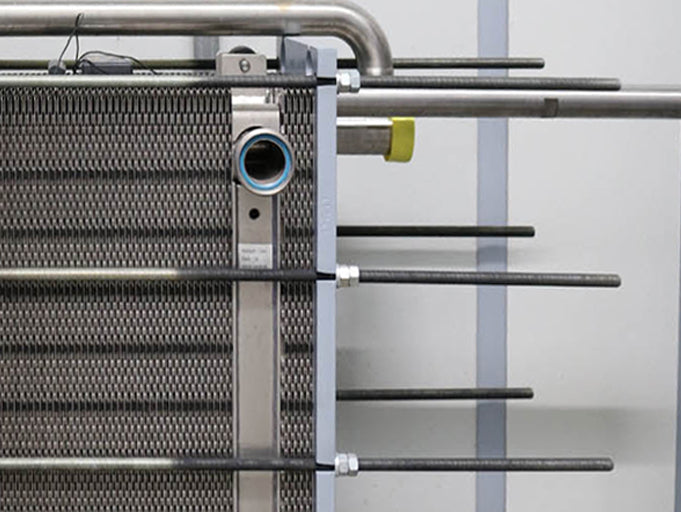Filtering and rinsing
The next step is to filter the sugar-rich mash. The hot mash is pumped to the filtering bowl. The chaff particles of the malt form a filter bed at the bottom, through which the sweet liquid gently seeps. We rinse the filter bed with hot water to take away as many sugars as possible that are still in the filter bed. The clear sugar-rich liquid that remains is called wort. The wet chaff particles that remain in the filter bed, also called draff, eventually serve as cattle feed.
Boiling of the wort
The wort now enters the boiling kettle. Boiling is necessary for various reasons. The prolonged heating sterilises the mixture. It ensures that the large protein molecules are removed from the wort, that unwanted volatile substances evaporate from the wort and that bitter substances dissolve in the wort. Bitter hops are added at the start of the boiling process and aroma hops at the end. The latter hops add additional flavour and aroma components. How long the brew must be boiled in total depends on the style of beer, but always for at least one hour.

Cooling
After boiling, the wort goes to the fermentation tank. The hot wort must be cooled as quickly as possible to a temperature at which the fermentation process can start. For this, we use a plate cooler. On one side of the plate cooler, we pump the hot wort through, on the other side cold water. In this way, the hot wort transfers its heat to the cold water.
Fermentation
The cooled wort goes into the fermentation tank. The yeast is added and converts the sugars in the wort into alcohol, carbon dioxide and many other aroma components. At this point, we speak of beer for the first time. The whole process takes a week to several weeks, depending on the yeast used and the beer recipe.
Lagering
After the main fermentation, the beer is left to lag. The beer is brought to a low temperature for several weeks. During this period the beer can rest and mature. The yeast cells sink to the bottom and the beer clarifies.
Bottling
After the weeks of lagering, it is time to bottle the beer. We add a small amount of yeast and sugar to the beer before filling the bottles. The bottles are then crown capped, sleeved and labelled before being placed in containers or boxes.

Refermentation
The finished bottles remain in a warm room for another 2 weeks for refermentation in the bottle. During this refermentation, extra carbon dioxide is created. This creates the fine gas bubbles in the beer that are necessary for a nice head when pouring. After the refermentation process and an additional maturation in our cellars, the beer is ready for distribution.
Distribution
Once the beer has re-fermented and has matured for a few more months in our warehouse, we take it to pubs, restaurants, supermarkets, drinks shops... and so on.
Tasting
Finally, you can taste and enjoy our local speciality beers to your heart's content. Cheers!

